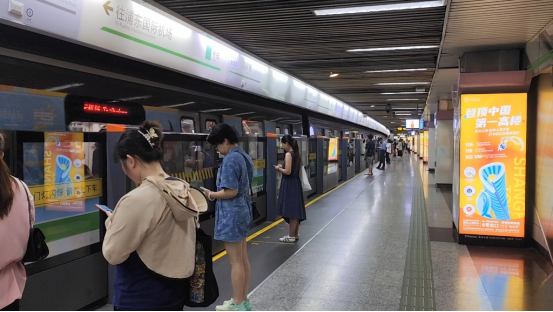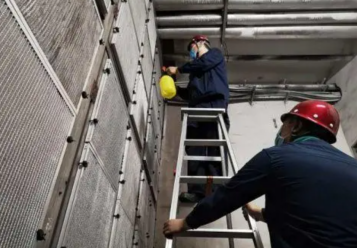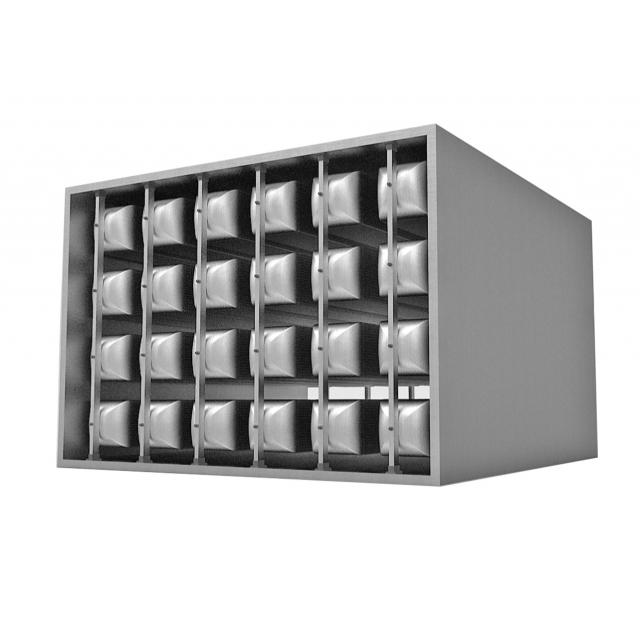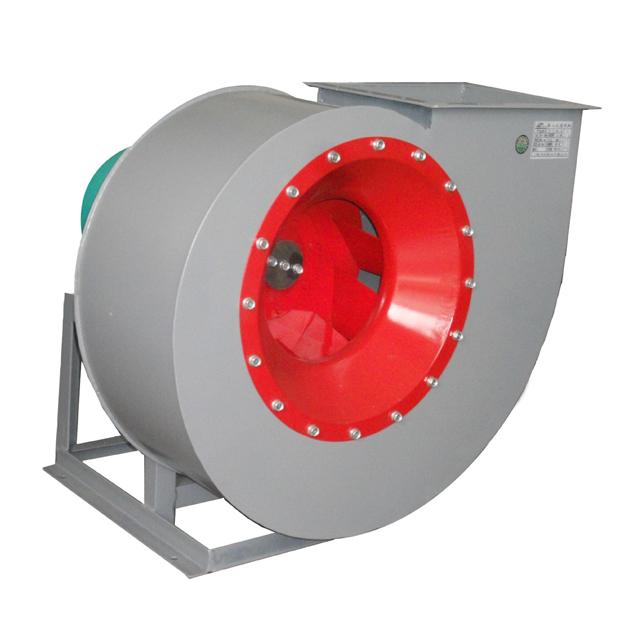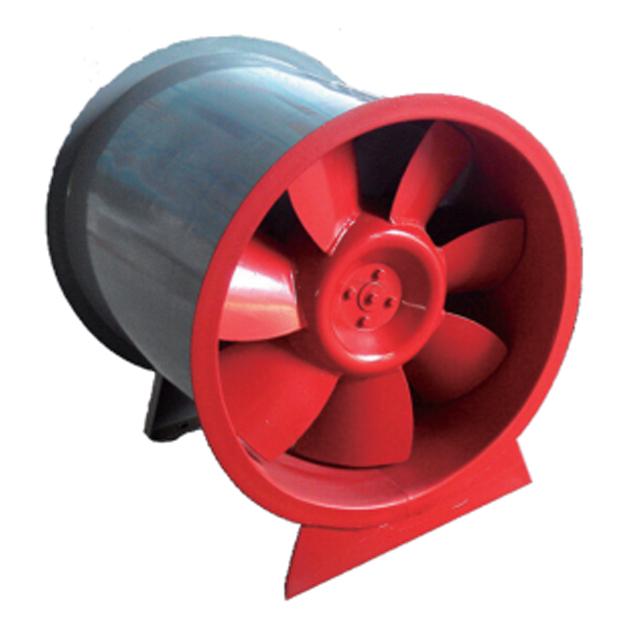Subway ventilation engineering: Definition, requirements and implementation
1. Overview of the subway ventilation engineering
1.1 Importance of the ventilation system
Subway ventilation system plays a vital role in ensuring passenger safety and comfort. Tens of millions of passengers around the world rely on the subway as a daily commute tool, and a good ventilation system can significantly reduce the concentration of carbon dioxide found in the car and maintain oxygen levels, thus ensuring their respiratory health. The ventilation system is also closely connected to the fire safety system in the subway station. In the case of a fire, the ventilation system can quickly discharge harmful smoke, providing a clear escape path for passengers.
1.2 Characteristics of subway environment and ventilation requirements
As an important part of urban public transportation, the design and implementation of the subway ventilation system must fully consider its unique environmental characteristics and ventilation needs. The air circulation in subway platforms and tunnels is limited and crowded, which leads to the easy accumulation of pollutants and heat in the air, thus posing a threat to the health and comfort of passengers. The ventilation system should not only meet the basic air exchange needs, but also be able to cope with extreme weather conditions and passenger flow pressures during peak hours. Advanced air flow and distribution technology is designed to ensure efficient air circulation between the tunnel and the platform. In the meantime, the application of air purification and filtration technology is also crucial to reduce the impact of pollutants such as particulate matter and harmful gases on passengers. In addition, the design of the ventilation system should follow the principle of safety and reliability to ensure that in an emergency situation, such as fire or terrorist attack, smoke and harmful gases can be quickly and effectively eliminated to ensure the safety of passengers.
2. Design principles of subway ventilation system
2.1 Requirements for safety and reliability
In the design and implementation process of subway ventilation engineering, safety and reliability are the core considerations. As an important part of urban public transportation, the subway carries thousands of passengers every day. Therefore, the ventilation system must be able to respond to all kinds of emergencies and ensure the safety of passengers. An efficient ventilation system can expel smoke and harmful gases from the tunnel in five minutes in the event of a fire, buying valuable time for passengers to evacuate. The design phase must follow strict safety standards to ensure the performance of the ventilation system under extreme conditions. In addition, reliability requires that the ventilation system remain stable in daily operations and reduce failure rates, which involves not only redundancy of system design, but also high requirements for key components such as fans, sensors and control systems. During the construction stage, verified construction methods and quality control process must be adopted to prevent system failure caused by improper construction.

2.2 Comfort and energy-saving considerations
In the design and implementation process of subway ventilation engineering, the consideration of comfort and energy saving is very important. To ensure a passenger comfort experience, the ventilation system must be able to provide suitable temperature, humidity and fresh air. The temperature in the subway car should be kept between 20 and 26 degrees Celsius, and the relative humidity should be controlled at 40% to 70%. Such environmental conditions can help to reduce passengers' discomfort and improve the overall ride experience. At the same time, energy saving requires the ventilation system to meet the comfort level, as far as possible to reduce energy consumption. The ventilation equipment using frequency conversion technology can adjust the air volume according to the actual needs, so as to save energy. For example, one study showed that subway ventilation systems can reduce energy consumption by 20 to 30 percent with intelligent control technology. In addition, the introduction of green building concepts, such as the use of solar panels to provide some of the energy for the ventilation system, is also an effective way to achieve the energy-saving goals.
3. Type of subway ventilation system
3.1 Natural ventilation system
Natural ventilation system plays a vital role in subway ventilation engineering, using the forces of nature, such as wind pressure and thermal pressure, to realize the air circulation, thus improving the air quality in the subway station. In summer, the temperature in the subway station is often higher than that in the outside world. The natural ventilation system can promote the thermal pressure effect of the temperature difference through the design of reasonable vents and air duct, and introduce cooler air from the outside world. The natural ventilation system can reduce energy consumption by up to 30% under suitable climate conditions, which not only improves the comfort of passengers, but also conforms to the design principles of energy saving and environmental protection.
When designing a natural ventilation system, engineers need to consider the specific environment and geographical location of the subway station. For example, some stations of the Beijing subway use the design of the underground air duct, combined with the layout of the ground buildings, to form an effective natural ventilation path. This design not only reduces the dependence of the mechanical ventilation system, but also ensures the ventilation efficiency through simulation analysis and field testing.
However, natural ventilation systems also face challenges, especially in areas with unstable climatic conditions. Subway stations may be located in rainy or dusty areas, which requires the natural ventilation system to have certain rain and dust protection capacity. Moreover, the design and implementation of natural ventilation systems requires precise calculation and scientific analysis to ensure that ventilation efficiency is still maintained in extreme weather conditions. As a result, designers and engineers often use computational fluid dynamics models to simulate ventilation in different weather conditions to optimize the design and ensure the reliability and effectiveness of the system.
3.2 Mechanical ventilation system
Mechanical ventilation system plays a vital role in subway ventilation engineering, ensuring the air circulation in subway platforms and tunnels through a series of fans, pipes and controls to meet the comfort and safety needs of passengers. The subway station should not be changed for less than 12 times per hour to ensure that the concentration of harmful gases and particulate matter remains below a safe level. The design of the mechanical ventilation system should not only consider these basic ventilation needs, but also combine the subway operation time, passenger flow and environmental temperature, etc.
When designing mechanical ventilation systems, safety and reliability are the primary principle. For example, a redundant design is used to ensure that the standby system can be activated immediately when the main ventilation equipment fails and maintain the normal operation of the ventilation system. In addition, the design of the ventilation system should also follow energy saving considerations, such as the use of frequency conversion technology to adjust the running speed of the fan to meet the ventilation needs of different time periods, so as to reduce energy consumption.
In the process of implementing the mechanical ventilation engineering, the challenges in the construction stage are particularly prominent. Due to the small subway space and dense traffic flow, the construction activities must be carried out without affecting the normal operation. For example, when upgrading the ventilation system, Beijing Metro adopts the modular construction method, which decomposes the large equipment into small modules, and is installed in the low peak period at night, effectively reducing the impact on passengers. At the same time, the construction team needs to address issues such as pipe layout, accuracy of equipment installation, and compatibility with existing structures to ensure the efficient operation of the ventilation system.
The future trend of subway ventilation engineering points to the application of intelligent and automation technology. The mechanical ventilation system will achieve more precise environmental control through sensors, controllers, and intelligent algorithms. For example, using Internet of Things technology, a ventilation system can monitor air quality in real time and automatically adjust air volume to achieve optimal ventilation. In addition, green and sustainable development strategies will also become an important consideration when designing mechanical ventilation systems, such as using renewable energy-driven ventilation equipment to reduce carbon emissions and achieve a green upgrade of subway ventilation systems.
Fourth, the Implementation process of the subway ventilation project
4.1 Consideration in the design stage
In the design stage of subway ventilation engineering, safety and reliability are the primary factor. The design team must ensure that the ventilation system responds to extreme situations such as fire or terrorist attacks. Good ventilation system can quickly discharge smoke and harmful gases in the event of a fire, buying valuable time for passengers to evacuate. The design also requires subway station passenger flow to ensure suitable air flow during rush hours. In addition, the design phase should use an advanced computational fluid dynamics (CFD) model to simulate the air flow under different operating conditions to optimize the air duct layout and fan configuration.
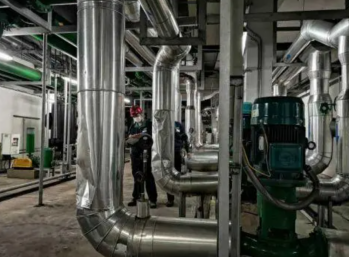
4.2 Challenges and solutions during the construction stage
In the construction stage of subway ventilation engineering, the challenges are various, including but not limited to the limitation of construction space, complex underground environment, and minimizing the impact on existing operating lines. For example, in the London Underground's ventilation system upgrade project, construction teams must work in narrow and complex underground spaces, while ensuring that the daily travel needs of millions of passengers are not affected. To meet these challenges, advanced 3 D modeling technology is introduced into the construction scheme to simulate the construction process and identify potential conflict points and risks in advance, so as to optimize the construction plan. In addition, the use of modular components and prefabrication technology can complete the production of some components in the factory, reducing the site construction time and reducing the impact on operations.
V. Maintenance and management of subway ventilation engineering
5.1 Key points of routine maintenance
The daily maintenance of the subway ventilation system is the key link to ensure the safety and comfort of passengers. According to the international subway operation standards, the maintenance cycle of the ventilation system is usually set to conduct a comprehensive inspection quarterly to ensure the normal operation of all the ventilation equipment. In New York City, for example, the ventilation maintenance team uses advanced sensor technology to monitor air quality indexes in real time to ensure that the concentration of harmful particulate matter such as PM2.5 remains within a safe range. In addition, the maintenance team will replace the filters regularly to prevent the accumulation of dust and pollutants, which not only extends the service life of the equipment, but also improves the energy efficiency.
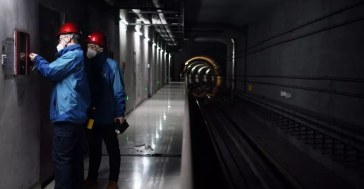
5.2 Emergency response plan and risk management
In subway ventilation engineering, emergency plan and risk management are the key links to ensure passenger safety and stable operation of the system. Subway ventilation systems must be able to respond to various emergencies such as fire, terrorist attacks or other emergencies that can lead to the production of large amounts of smoke and harmful gases. Therefore, the design stage needs to take into account these potential risks, and develop the corresponding contingency plan. In terms of risk management, the possible faults and events can be predicted and evaluated, so as to develop a more scientific and reasonable emergency plan. In addition, the maintenance and management of the subway ventilation system should also include regular emergency drills to ensure that all relevant personnel can implement the plan quickly and accurately in real emergency situations to minimize casualties and property losses.



